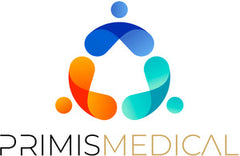The medical industry in 2023 is drastically different than what it was in earlier years. In the past few years, medical technology has advanced in leaps and bounds, resulting in a much improved medical industry.
One of the most significant developments in the medical industry in 2023 is the widespread use of artificial intelligence (AI). AI is used to diagnose and treat diseases and predict potential health problems before they happen. AI can also identify patterns in patient data, which can help tailor treatments to the individual. AI also enables medical professionals to identify potential therapies quickly and to provide more accurate diagnoses and treatments.
One of the most significant developments in the medical industry in 2023 is the widespread use of artificial intelligence (AI). AI is used to diagnose and treat diseases and predict potential health problems before they happen. AI can also identify patterns in patient data, which can help tailor treatments to the individual. AI also enables medical professionals to identify potential therapies quickly and to provide more accurate diagnoses and treatments.

Another significant advancement in 2023 is 3D printing for medical purposes. 3D printing can be used to create custom prosthetics and implants and to create living tissue for organ transplants. This technology has enabled doctors to create highly customized medical treatments tailored to the individual patient.

Robotics is also used extensively in the medical industry to automate mundane tasks and reduce human error. Robotic surgeries are becoming increasingly common, and they can perform complex procedures with greater accuracy and less risk of complications than a human doctor could. Medical laboratories also use robots to identify and analyze samples quickly and accurately.

Finally, virtual reality (VR) is increasingly used in medicine. VR can be used to provide immersive training and education for medical professionals, as well as to aid in diagnosing and treating patients. VR can also offer a more immersive experience for patients undergoing procedures, helping reduce the stress and anxiety they may be feeling.
In addition to these cutting-edge technologies, medical professionals in 2023 heavily rely on big data. Big data is used to analyze patient data to identify trends and patterns in their health. This data can then be used to create personalized treatments for individual patients and better understand how different medicines may affect others. Big data is also used to identify potential risk factors for certain diseases and determine the best ways to prevent them.

Medical professionals are also taking advantage of advanced imaging technology to help diagnose and treat patients. High-resolution imaging devices such as MRI and ultrasound machines are being used to better look at the body's inner workings. This technology is also being used to detect the early signs of certain diseases, allowing doctors to start treatments much earlier.
Gene editing is another significant development in the medical industry in 2023. Gene editing is being used to treat and even cure certain genetic disorders and to change the genetic makeup of cells to make them more resistant to disease. This technology can potentially revolutionize the medical industry as it can treat a wide range of conditions with greater accuracy and success.

Finally, telemedicine is becoming increasingly popular in the medical industry in 2023. Telemedicine is a technology that enables doctors to provide medical advice and treatment remotely via video calls or other digital platforms. This technology benefits patients in remote locations, allowing them to access medical care without traveling. Telemedicine has also enabled medical professionals to provide more efficient and cost-effective care.
Gene editing is another significant development in the medical industry in 2023. Gene editing is being used to treat and even cure certain genetic disorders and to change the genetic makeup of cells to make them more resistant to disease. This technology can potentially revolutionize the medical industry as it can treat a wide range of conditions with greater accuracy and success.

Finally, telemedicine is becoming increasingly popular in the medical industry in 2023. Telemedicine is a technology that enables doctors to provide medical advice and treatment remotely via video calls or other digital platforms. This technology benefits patients in remote locations, allowing them to access medical care without traveling. Telemedicine has also enabled medical professionals to provide more efficient and cost-effective care.

In addition to the technologies already mentioned, medical professionals are also taking advantage of advanced biotechnologies to create new treatments and therapies. Genetic engineering is used to engineer cells and proteins to develop new treatments for various diseases. This technology can be used to create precise therapies tailored to the individual.
The use of nanotechnology is also becoming increasingly common in the medical industry. Nanotechnology enables doctors to deliver drugs and treatments directly to the affected area, resulting in more effective treatments with fewer side effects. This technology can also be used to create nanorobots that can be used to detect and treat diseases at a cellular level.

Medical professionals are also innovating with the use of wearables. Wearables are becoming increasingly popular among patients, enabling them to track their health data more efficiently. Wearables can be used to keep track of heart rate, blood pressure, and other vital signs and to report this data to medical professionals in real time. This data can then be used to tailor treatments to the individual and detect potential health problems before they arise.
Overall, the medical industry in 2023 is drastically different from earlier years. With the implementation of cutting-edge technologies such as AI, 3D printing, robotics, VR, big data, imaging, gene editing, and telemedicine, medical professionals can provide better and more personalized care to their patients. In addition, the use of biotechnology, nanotechnology, and wearables is helping to revolutionize the medical industry, resulting in more efficient and cost-effective treatments.
The use of nanotechnology is also becoming increasingly common in the medical industry. Nanotechnology enables doctors to deliver drugs and treatments directly to the affected area, resulting in more effective treatments with fewer side effects. This technology can also be used to create nanorobots that can be used to detect and treat diseases at a cellular level.

Medical professionals are also innovating with the use of wearables. Wearables are becoming increasingly popular among patients, enabling them to track their health data more efficiently. Wearables can be used to keep track of heart rate, blood pressure, and other vital signs and to report this data to medical professionals in real time. This data can then be used to tailor treatments to the individual and detect potential health problems before they arise.
Overall, the medical industry in 2023 is drastically different from earlier years. With the implementation of cutting-edge technologies such as AI, 3D printing, robotics, VR, big data, imaging, gene editing, and telemedicine, medical professionals can provide better and more personalized care to their patients. In addition, the use of biotechnology, nanotechnology, and wearables is helping to revolutionize the medical industry, resulting in more efficient and cost-effective treatments.






